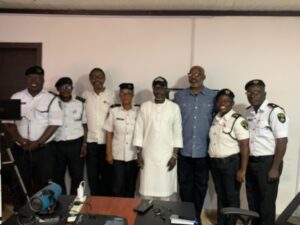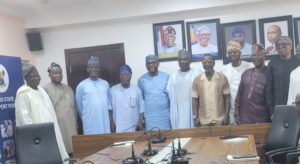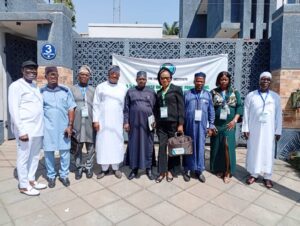LASWA Maps Lagos Waterways to Boost Safety

Pic 1 - - - L-R: Chief Executive Officer Mitimeth, a Lagos Based Social Enterprise, Mrs Achenyo Idachaba-Obaro, Chairman, Ijede Local Government Development Area (LCDA), Mrs Motunrayo Gbedebo-Alogba, The General Manager, Lagos State Waterways Authority (LASWA), Mr Damilola Emmanuel, the Vice Chairman Ijede LCDA Mr Kabir Kareem, the Council Treasurer, Mrs Kemi Ajayi during the 5th Edition of Seven-Day Annual Water Hyacinth Recycling Initiative, organised by LASWA in conjunction with Social Enterprise Mitimeth and Ijede Local Council Development Area (LCDA) in Lagos.
Samuel Mobolaji
The General Manager of Lagos State Waterways Authority, (LASWA), Mr Oluwadamilola Emmanuel, announced the mapping of the entire Lagos waterways to boost safety.
Mr Emmanuel said the move would also help to locate abandoned dredging pipes and remove them to avoid accidents.
According to him, “We have been able to map the entire waterways in Lagos; we were able to map it to provide us with the locations of these dredging pipes and how we are going to go about it.
Because you have to ensure that these things are gotten rid of, you have to ensure that the wrecks are removed,” he said.
He advised dredgers to avoid abandoning their equipment on the waterways after working.
“Now, talking about dredgers, why would you use equipment and then abandon it on the waterways? There are other users of the waterways. My clear message to every dredging company is to think about the next user of the waterways, the same place you are dredging; if you don’t do the appropriate thing, would you be able to dredge there? So, it’s a very clear message of removing your dredging pipes once you are done dredging and removing your dredging,” he said.
Speaking on the sidelines of the recently concluded International Women’s Day, Emmanuel added that he has been able to address the issue of gender imbalance in the agency.
He mentioned that women have been instrumental to the successes the agency has recorded so far.
“When I came into LASWA, there were maybe four or five women, I think, because the fifth one left, so there were four women. And over time, I saw that there was a gender imbalance in terms of how many men there were; the ratio of men to women was high,” he said.








